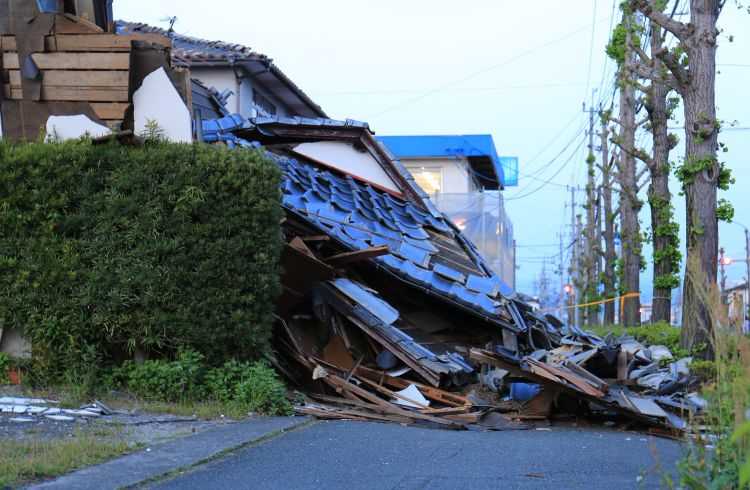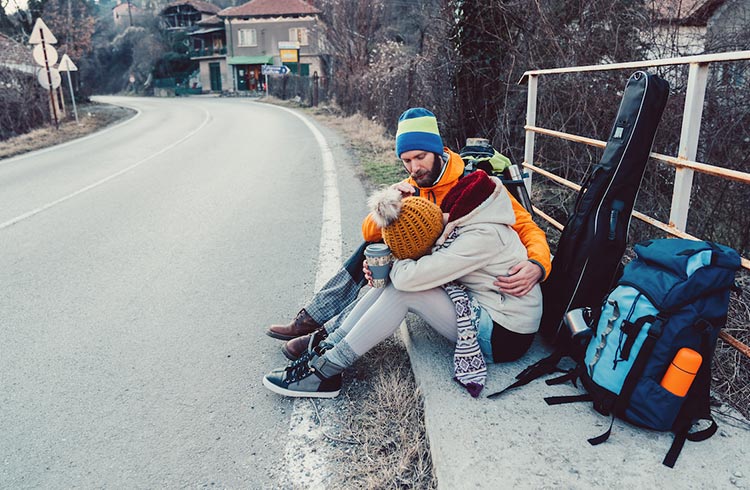How to Survive a Tsunami: 6 Important Travel Safety Tips
When a tsunami warning is issued, what do you do? Find out about the warning signs, how to prepare and stay safe. These 6 tips could save your life.
 Photo © iStock/akiyo
Photo © iStock/akiyo
We asked Kirk Willcox from Surf Aid International, a non-profit organization and partner in the World Nomads Footprints Program, who has had great experience with tsunami-affected areas.
The three vital signs you can use to detect an impending tsunami are;
- You feel shakes and tremors underfoot
- The water begins to recede
- If you hear a loud roar from the ocean.
1. Be prepared for a tsunami
If you are traveling to areas that are known to be tsunami hotspots, it's vital to be prepared, and be alert to any warnings made by local authorities.
Inside your travel pack, make sure you keep an emergency kit in case you need to make a dash in the middle of the night.
Stock food, water, climate-appropriate clothing, and if possible a small first aid kit – keep it packed with enough essentials for a few days.
However, try your best to keep it light so you can pick it up and scamper in an instant. You might need it if you have to.
2. Get to higher ground
Run up the hill. Kirk said this is literally the best advice he can give in regard to tsunami safety.
If the feeling is that a tsunami is about to hit your area, it's better to be safe than sorry (or submerged).
Tsunamis can strike very, very quickly following an earthquake – so the quicker, and higher, you can get up a hill the better.
And if you have a lighter emergency pack, you will travel faster – you don't want to be lumbered by an enormous suitcase.
3. And stay there
Tsunamis tend to strike more than once, with several cycles spaced out over time even lasting up to a few days.
If you go back to lower ground prematurely, you could get caught up in a second or third tsunami wave. This is why it's important to keep high and dry for a sustained period.
But when making your assessment of when to go back down, it's also very, very important to listen to the advice of authorities.
4. Be extremely cautious with warnings and warning systems
It has been reported that the high death toll for the 2004 Sumatra tsunami was in part caused by a defective tsunami warning system – people simply weren't prepared.
In recent years, developing nations plagued by tsunamis have suffered from the effects of vandals and thieves tampering with and destroying systems put in place to alert authorities about an impending tsunami.
Kirk says that in some cases, authorities have delivered radio broadcasts giving an all clear for people to descend from the hill, only to be trumped by a second, third or fourth wave.
Again, the mantra here is to be extremely cautious when making a decision to descend – listen closely to alerts, but be careful if you are given the 'all-clear'.
5. Know the topography of your destination
It's vital to know not only the tsunami history of the area you are traveling to, but also the topography of the location.
Villages established at low sea level will get hammered by a tsunami, while villages settled in deeper water areas are not as affected.
This information can be vital to your action plan in the vent of a tsunami.
6. Know the locals and authorities
It's important to make an attempt, even across language barriers, to talk to locals where you are staying about what systems and infrastructure is in place to deal with a tsunami.
Every area is different, so they will range from ‘very little' to ‘comprehensive'. Arm yourself with the best information you can – your investigations could very well save your life.
Related articles
Simple and flexible travel insurance
You can buy at home or while traveling, and claim online from anywhere in the world. With 150+ adventure activities covered and 24/7 emergency assistance.
Get a quote

5 Comments
I am a survivor of a locally generated tsunami in Halape, Hawaii on November 29, 1975. Two earthquakes, 5.5 then 7.7 early in the morning generated a wave that killed people in the pitch black of night. I have a story to share long before people heard the word "tsunami" when the terrible hit Thailand. Although it's been nearly 40 years now, the events of that night are as vivid as if it was last night.
Who can I share my life experience with this heavily documented event by the USGS?
Bradley Jones
415.716.3848
I would love to hear more about this event and details as to what you think a person could do to increase their chances of surviving. What type of equipment should one have ready? How much time would one have? Etc
The whole " authorities have delivered radio broadcasts giving an all clear for people to descend from the hill, only to be trumped by a second, third or fourth wave.
" actually happened here in Chile in 2010. Lots of people died because of it and we as citizens had a huge trial against authorities. So the advice is very important
I think the best way to survive a tsunami is to get to high ground...
But how do you survive a comet? hm?